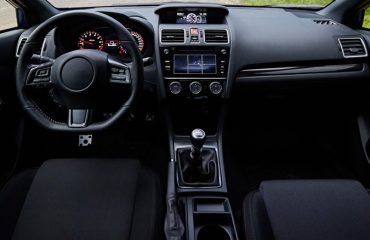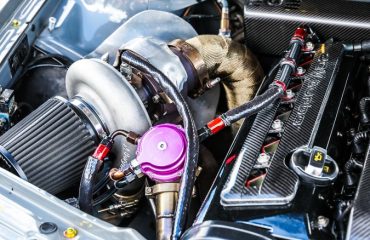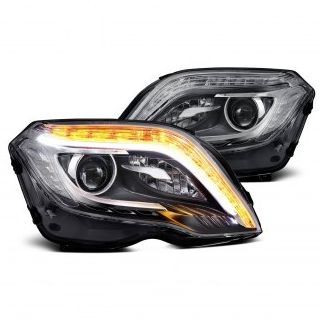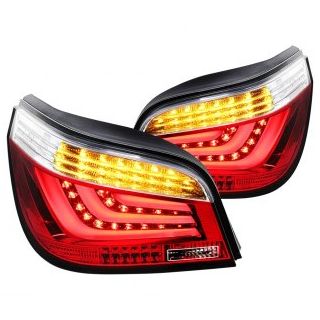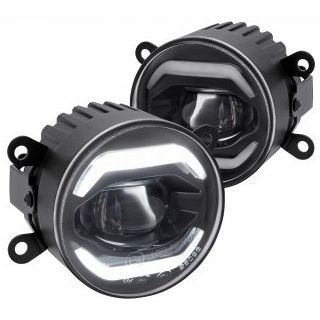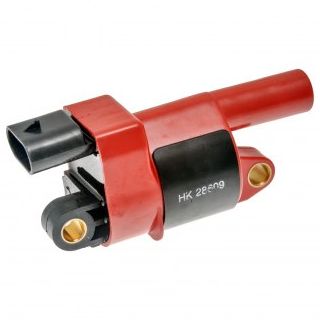
As buyer tastes change over time and manufacturers develop new technologies, it’s only natural that some automotive features make the leap to being mainstream while others are consigned to the history books. However, for every high-profile car feature that gets phased out, like the CD player or the manual transmission, there are plenty of features that come and go without anyone noticing. Sometimes, it’s simply a matter of carmakers replacing them with better alternatives, and in other cases, those overlooked features simply never caught on in the first place.
In rare cases, the most unusual car features become sought after collectors’ items, but often they simply fade into obscurity. These features all appeared on cars from decades past, and although some are now desirable, others seem very quirky — or even downright weird — in retrospect. From questionable safety tech to tax-saving seating arrangements, you won’t find any of these features in a new car today.
Record player
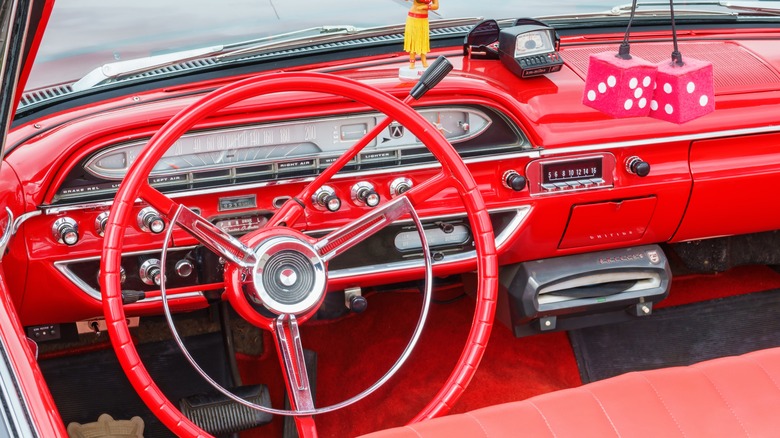
Having a large, unwieldy record player bolted into the front of a car might seem like a very impractical solution to in-car audio. It was, and the idea would eventually die out after never catching on in the way its makers had hoped. However, the idea was surprisingly long lived, even with its limitations. The first of those limitations was quickly discovered after the first in-car record players were introduced in Chrysler cars in the mid-’50s. Although the soft, cushy suspension of the brand’s top models allowed for minimal skipping while driving, mid-range cars suffered heavily as their suspensions were not so refined.
There was also the issue of playing time, as the record players could only fit seven-inch discs. A new kind of disc was developed at CBS to fit a larger record on a smaller disc, but only a select few records were available to buy, limiting buyer choice to a few dozen options. An improved system was debuted for the 1960 model year which could switch between up to 14 single discs, but it still wasn’t as convenient as just turning on the radio.
The in-car record player survived as a niche option throughout the ’60s on certain cars, progressively becoming more obscure until it was axed altogether in 1970. It remains a sought after option among certain classic car collectors, but has been largely forgotten about by everyone else in the wake of cassettes, CDs, and digital music streaming.
Ice maker
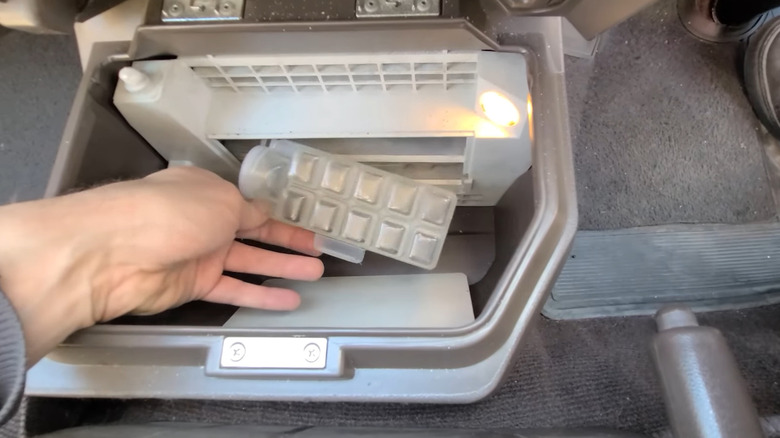
Minivans and other family haulers are some of the best cars in which to find unusual features. In the early days of the minivan segment, manufacturers tried all sorts of gimmicks to stand out from the competition. In the case of the Toyota Van, first launched in the mid-’80s, one of those standout features was the inclusion of a built-in ice maker and a fridge. While fridges and drinks coolers can still be found on cars today, it’s rare to find an ice maker.
The ice maker wasn’t the only unique thing about the Van, as its boxy design and mid-engine layout are also products of a bygone era. The latter is particularly noteworthy, with the engine placed below the front row of seats. To access it, the seats had to be lifted, making routine maintenance a more complex procedure than most other vans. The Van was replaced in 1990 by the even funkier looking Previa, but only Euro-spec Previas were equipped with an ice maker while Americans had to make do without one.
Shower
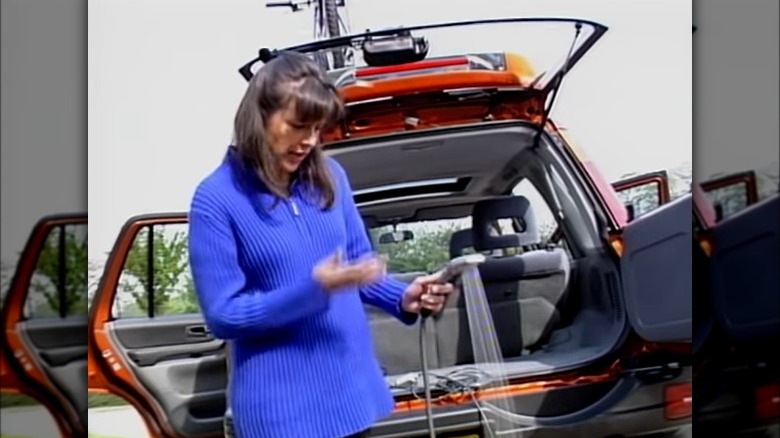
Which in-car option is the weirdest is a matter of personal opinion, but a strong candidate has to be the built-in shower that was available on the options sheet of the first generation Honda CR-V. While a campervan with a shower makes much more sense, installing a shower on a Civic-based compact SUV seems pretty strange. Nonetheless, Honda offered the option from 1997 to 2001, presumably in a bid to boost the car’s image as a capable adventure vehicle. It’s not known how many buyers added the shower as an option.
There are few instances where the shower seems like it would come in useful, at least in the context of most CR-V owners’ activities. Perhaps it was intended to be used as a way of rinsing mud off shoes, clothes, and equipment after a long day outdoors, or ensuring that a dog is clean before getting back in the car after a walk. Buyers looking to add a portable shower into their modern CR-V are out of luck, as the option was removed several generations ago.
Night panel
While it’s well known to Saab fans, the company’s Night Panel remains a feature overlooked by many other enthusiasts. It was first introduced in 1993 and was designed to solve the issue of interior lighting obscuring the driver’s vision at night. When the Night Panel was enabled, every light on the dashboard would be turned off apart from the speedometer. The thinking was that on long night drives, this would reduce the chance of eye strain as well as make it easier to focus on the road ahead.
The feature continued to be offered on Saab’s cars until its demise in the wake of GM’s bankruptcy, and since then, no other carmaker has copied the feature. Volvo Trucks, however, unveiled a very similar feature for its European commercial lineup in 2017. With today’s cars offering an ever expanding range of screens, it seems like one classic feature that’s ripe for revival, but for now, it remains limited to old Saabs.
Water-filled car bumpers
Although they never appeared as factory options, water-filled car bumpers were briefly offered by a west coast parts manufacturer in the late ’60s. Designed by Rich’s Soft Cushion Bumper Co, demonstrations for the feature were held in Los Angeles in 1967, and impressed local officials. A few Californian police departments reportedly fitted the bumpers, alongside a fleet of taxi drivers and a significant number of private buyers.
The rubber bumpers were designed with stoppers that would burst upon impact, sending water shooting out of the bumper in the process. This would absorb some of the force of the crash, making low-speed bumps potentially just a matter of refitting the stoppers and filling the bumpers back up again. While the invention proved to be somewhat popular on the west coast, it never spread to other parts of the country.
Despite their potential for improving safety, the bumpers were unsightly, and this hurt buyer demand. The company also reportedly got into legal disputes with car manufacturers, and eventually ran out of cash.
Rear seats in a truck bed
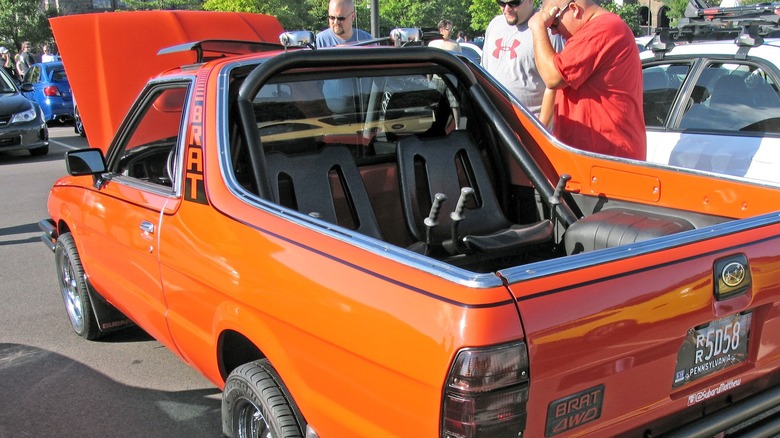
The Subaru Brat is an oddball truck that maintains a dedicated fanbase and, as a result, surprisingly high resale values. It’s not just the truck’s compact design and quirky looks that made it unique, although they certainly play a part in its appeal — instead, its defining feature is its rear seats. Specifically, where those rear seats are located. Rather than a traditional two-row extended cab or crew cab design, the Brat’s second row is mounted rearwards in the bed of the truck.
This was no design mistake; rather, it was a calculated choice by Subaru to keep its truck affordable. In order to preserve the dominance of domestic truck manufacturers, the U.S. government implemented the infamous “chicken tax” of 25% for any non-domestically made pickup. The Brat was made in Japan, and so would have otherwise been subject to the tax.
However, by installing the rear seats, the Brat could be classified as a passenger car rather than as a truck, which meant it was exempt from the tariff. The seats weren’t designed to be used, and could be easily removed from the truck bed by an owner. However, not all owners removed them, instead being content to leave their rear passengers hanging on for their lives via the grip handles while on the road.
[Featured image by Jacob Frey 4A via Wikimedia Commons | Cropped and scaled | CC BY 2.0]
Vanity set
For those that had the cash to splash, it was difficult to beat a ’57-’58 Cadillac Eldorado Brougham for all-out grandeur. It was more expensive and more lavish than a Rolls-Royce, and as such, was reserved for the most well-heeled of Cadillac clientele. Just 704 examples were built over the two model years, and each one came with a list of standard features and accessories longer than most cars’ entire options sheets.
Among the most unusual was the complimentary vanity set, including a powder case, mirror, lipstick, and a comb. Four tumblers were also standard in case the car’s occupants needed some liquid refreshment while on their journey. Other complimentary items included a leather-bound notebook, a cigarette case, a coin holder, and a scent dispenser.
A few of these features have since been repeated in modern cars. For example, Rolls-Royce currently offers an optional decanter set and cigar case on all its models, while certain high-end Mercedes-Benz models like the EQS offer fragrance dispensers. However, complimentary vanity sets remain mostly the preserve of Cadillac’s golden era cars.
Live music audio system
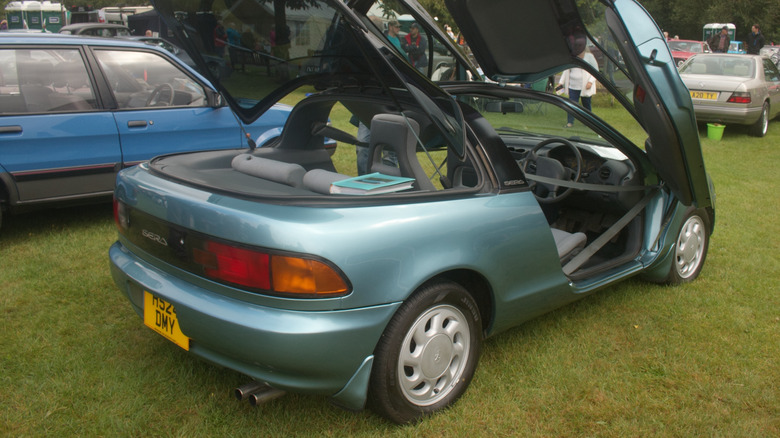
The Toyota Sera is best known for its butterfly doors, which are said to have inspired the design of the McLaren F1. However, that’s not the only unusual feature that debuted on the car. Another unique system was the Super Live Sound System, which was engineered specifically for the cabin of the Sera and designed to mimic the sound of live music. It was developed in collaboration with Fujitsu and featured 10 speakers, with those speakers mounted strategically throughout the car’s compact cabin.
Four of those speakers were mounted in a bar above the parcel shelf, which could rotate to bounce sound off different places in the cabin. In Casual Mode, the standard setting, the speakers were angled towards the cabin occupants, like any other in-car audio system. Engage Funky Mode, however, and the speaker bar rotated to face the car’s rounded rear window, with sound waves bounced off the window before reaching the car’s passengers. Toyota claimed that this added reflection increased reverb in a way that sounded like live music, giving passengers a unique experience.
The whole system was designed specifically for the acoustics of the Sera’s cabin, and after the Sera was discontinued, it was sadly not used in any other models. It was developed at the height of Japan’s bubble era, and by the time the Sera was axed, economic conditions were dire and fun features like the Super Live Sound System had no chance of further development.
Removable body panels
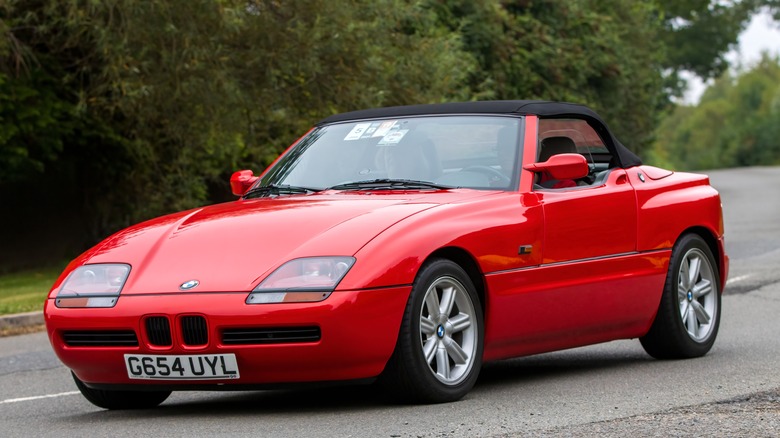
As any driver that’s been in a minor traffic scrape will know all too well, modern car body panels can be a hassle to replace. They’re often expensive, and if replaced by a professional, the labor required to refit them can add a significant premium to the final cost. However, BMW came up with a potential solution back in the late ’80s, and debuted it on an unlikely car. The Z1 roadster was the first product of BMW Technik, a skunkworks group that had split off from the main company to work on groundbreaking ideas. One of its first innovations was to develop a new technique for pressing plastic body panels, which allowed the carmaker to churn out low-volume body panels more easily than before.
The Z1’s body panels were all plastic and they were designed to be quickly removed and refitted if needed. Each panel was bolted to the car, and could be removed using only a screwdriver. According to BMW, that meant that, “with a complete second set of outer panels it would have been possible to convert a Z1 from red to blue in the space of an hour.” It also meant that replacing a damaged panel would be as simple as buying the correct part from a supplier and screwing it on at home, without the need for professional assistance. Unfortunately, this pioneering idea wasn’t transferred to other BMW models, nor taken up by any other car manufacturer.
Fax machine
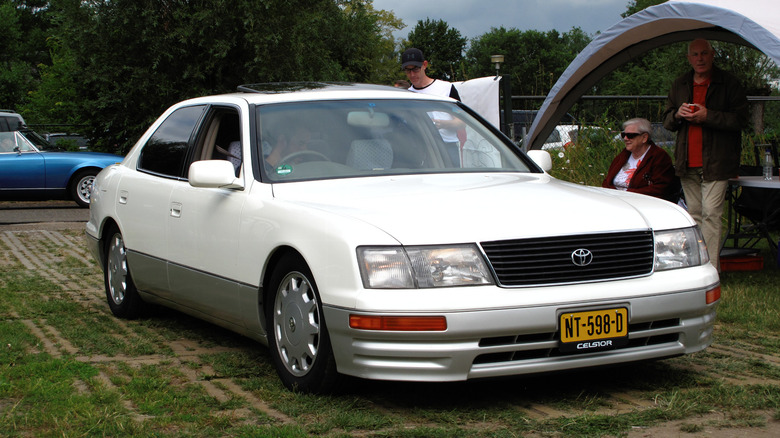
While it’s safe to say that a built-in fax machine wouldn’t be at the top of any car buyer’s shopping list today, it was once an unlikely status symbol in Japan. Cars like the Toyota Celsior – sold in the U.S. as the Lexus LS400 — offered Japanese buyers the option to send faxes from the back seat of their car, while being chauffeured to their offices to presumably spend their day sending even more faxes.
Japanese manufacturers weren’t the only ones to add fax machines, either. Strangely enough, Audi continued to offer one as an option on its executive-spec A8 up until the late-’00s, throughout the production of the D3 generation. Much like the Celsior of the ’90s, this A8 option was targeted primarily at Japanese buyers, who continued to use fax machines long after western offices switched to email. While fax machines continue to prove popular in Japan today, the in-car fax machine is no longer the desirable extra it once was.
[Featured image by Rutger van der Maar via Wikimedia Commons | Cropped and scaled | CC BY 2.0]
Pop-out windshield
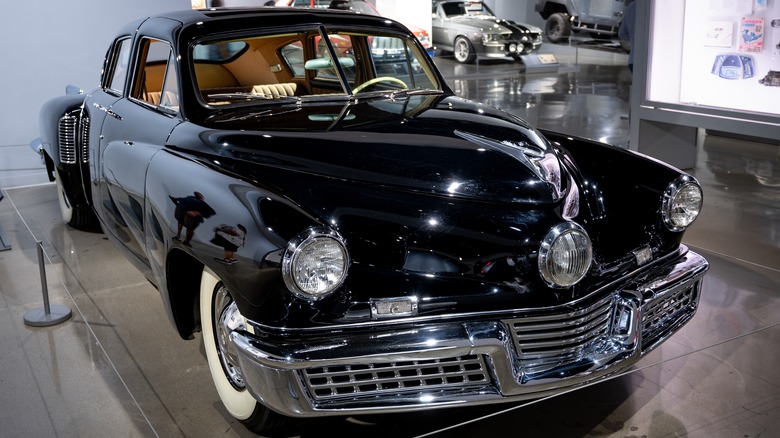
There are enough unusual car safety features out there that they could fill an article of their own, but one of the strangest has to be the pop-out windshield found on the Tucker Model 48. It was designed so that, in an accident, occupants wouldn’t risk smashing the windshield with their heads, although there are no records of whether the feature was ever tested in a real-world situation.
The Tucker Model 48 ended up being a very rare car, with only 51 examples built before a stock manipulation scandal forced the fledgling carmaker to close its doors. It’s best known for its “Cyclops eye,” the third headlight that’s mounted to the center of the car. It was designed to give the car’s driver better visibility while cornering, and the feature ended up being briefly adopted by other manufacturers including Subaru decades after Tucker closed its factory doors. The pop-out windshield, however, remained a feature unique to the Model 48.
